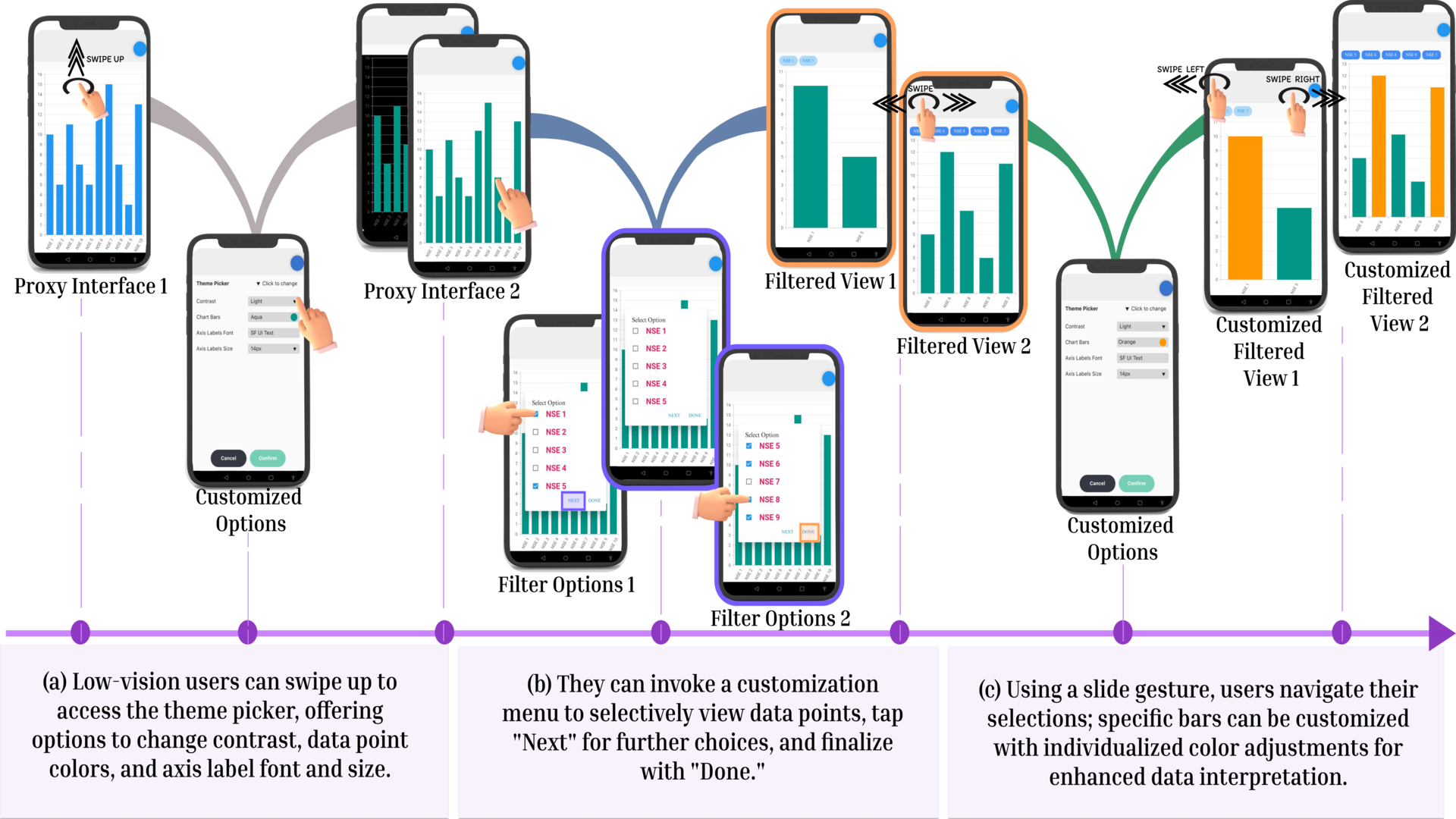Towards Enhancing Low Vision Usability of Data Charts on Smartphones
Yash Prakash - Old Dominion University, Norfolk, United States
Pathan Aseef Khan - Old Dominion University, Norfolk, United States
Akshay Kolgar Nayak - Old Dominion University, Norfolk, United States
Sampath Jayarathna - Old Dominion University, Norfolk, United States
Hae-Na Lee - Michigan State University, East Lansing, United States
Vikas Ashok - Old Dominion University, Norfolk, United States
Screen-reader Accessible PDF
Download Supplemental Material
Room: Bayshore I
2024-10-17T17:57:00ZGMT-0600Change your timezone on the schedule page
2024-10-17T17:57:00Z

Fast forward
Full Video
Keywords
Low vision, Graph usability, Screen magnifer, Graph perception, Accessibility
Abstract
The importance of data charts is self-evident, given their ability to express complex data in a simple format that facilitates quick and easy comparisons, analysis, and consumption. However, the inherent visual nature of the charts creates barriers for people with visual impairments to reap the associated benefits to the same extent as their sighted peers. While extant research has predominantly focused on understanding and addressing these barriers for blind screen reader users, the needs of low-vision screen magnifier users have been largely overlooked. In an interview study, almost all low-vision participants stated that it was challenging to interact with data charts on small screen devices such as smartphones and tablets, even though they could technically “see” the chart content. They ascribed these challenges mainly to the magnification induced loss of visual context that connected data points with each other and also with chart annotations, e.g., axis values. In this paper, we present a method that addresses this problem by automatically transforming charts that are typically non-interactive images into personalizable interactive charts which allow selective viewing of desired data points and preserve visual context as much as possible under screen enlargement. We evaluated our method in a usability study with 26 low-vision participants, who all performed a set of representative chart-related tasks under different study conditions. In the study, we observed that our method significantly improved the usability of charts over both the status quo screen magnifier and a state-of-the-art space compaction-based solution.